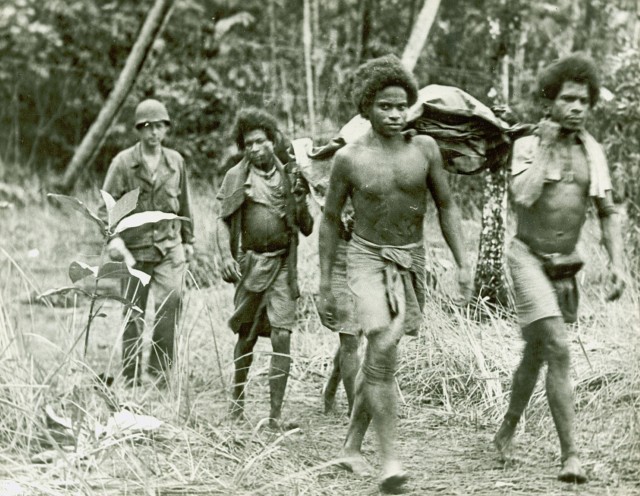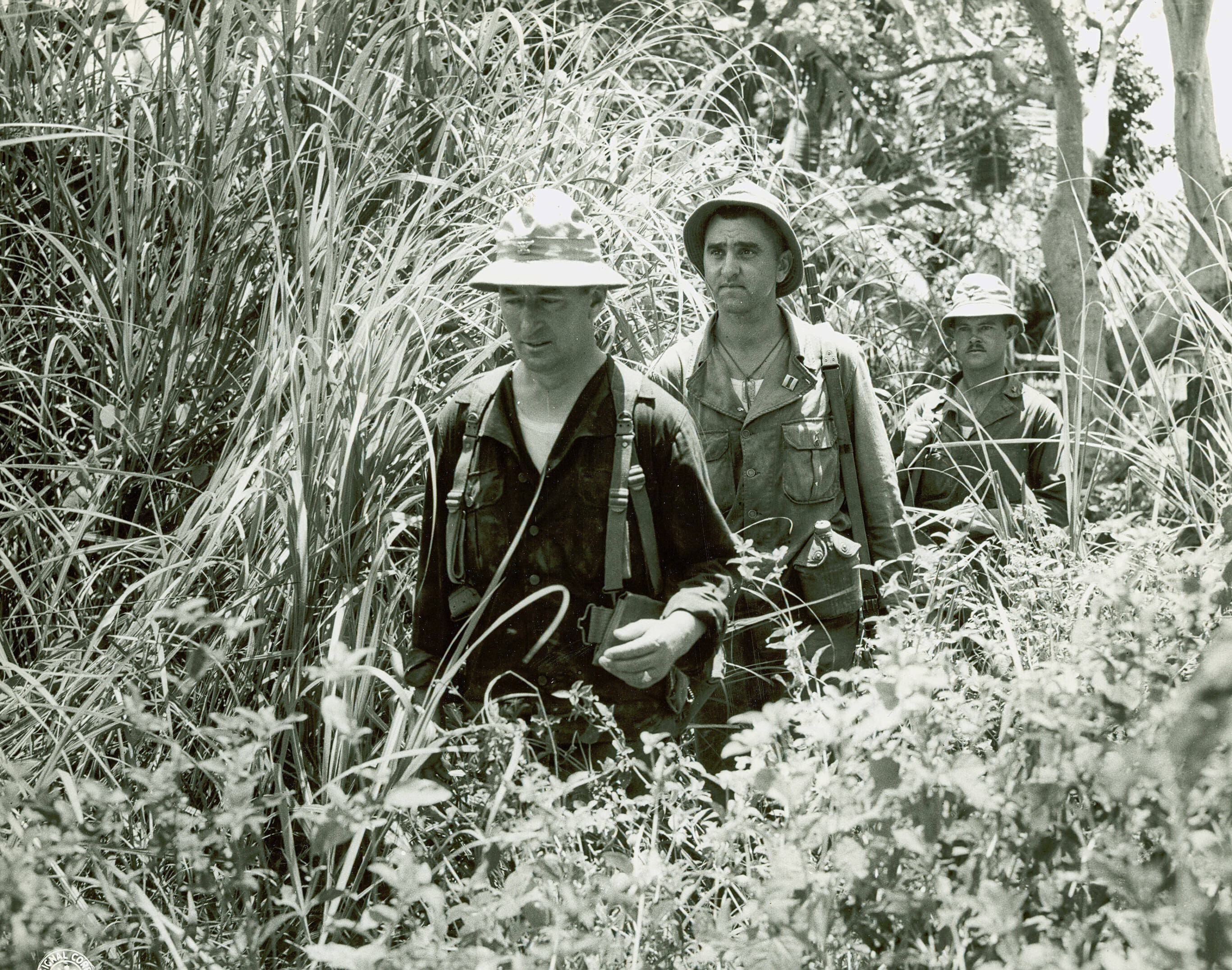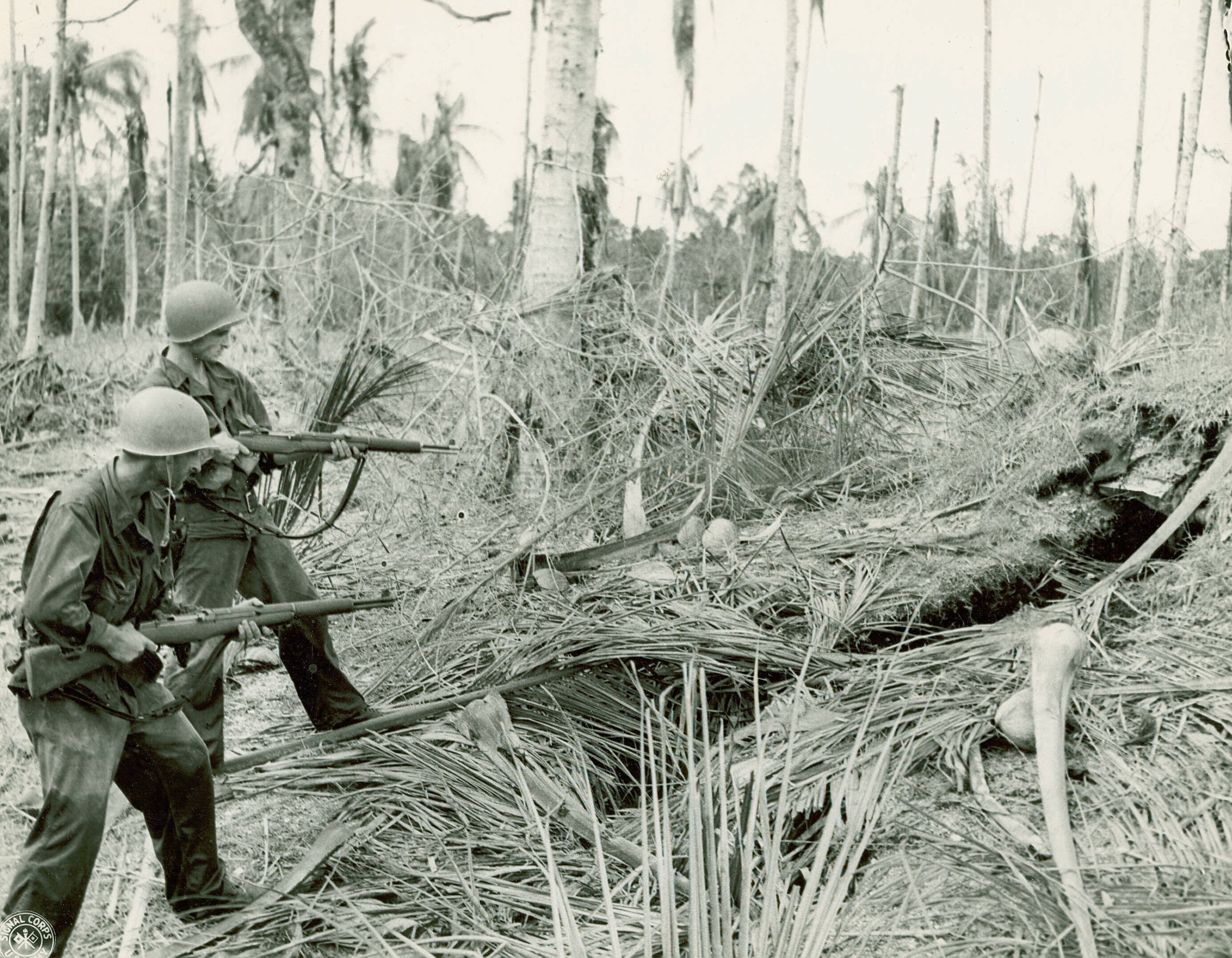From Valley Forge to Takur Gahr, U.S. Army Soldiers have fought and won in some of the most forbidding and hostile places imaginable. Many feats of endurance performed by America's fighting men have passed unnoticed and uncelebrated. The men of the 126th Infantry endured one of the most grueling tests of courage and fortitude faced by Soldiers of the U.S. Army during World War Two.
The United States and their Australian allies were fighting desperately to seize the strategic initiative from the Japanese in the Southwest Pacific during the early fall of 1942. The Japanese Army had landed on the north coast of the island of New Guinea, seizing airfields and establishing bases that threatened AustraliaAca,!a,,cs supply lines. Not content to control half the island, battle-hardened Japanese troops marched south along the infamous Kokoda Track and over the rugged spine of the Owen Stanley Mountains in an attempt to overrun the remaining Allied bases on New Guinea, placing Japan in a perfect position to isolate and perhaps invade Australia.
After bitter fighting Australian troops successfully blocked the Japanese assault just short of the key Allied base of Port Moresby and repulsed an amphibious landing at Milne Bay. Allied Supreme Commander General Douglas MacArthur was determined to drive the Japanese from their advanced bases and lift the threat to Australia. Shipping and transport aircraft were in short supply, and no landing craft were available. MacArthurAca,!a,,cs men would have to move overland across New Guinea, through the jungles of the Owen Stanley Mountains. Allied troops were neither trained nor equipped to fight in the rugged jungles of New Guinea, and some people doubted their ability to effectively challenge the Japanese, who had mastered the difficult environment. Nevertheless, the Soldiers resolved to press the attack.
MacArthur planned to move north along two main axes of advance. The Australians would push the Japanese back along the Kokoda Track while the U.S. 32nd Division would march up the less developed Kapa Kapa Track to the east. Reconnaissance patrols reported that while the trail was primitive and rugged, it was possible to traverse it through the jungle and over the mountains. The 32nd Division commander selected elements of the 126th Infantry to lead the way. Local tribesmen were recruited as guides and carriers. On October 6, the advanced scouts of the American column headed north along the trail.
The going was tough as the soldiers climbed up Aca,!A"razorbackAca,!A? ridges and marched through steady driving rains, along crude and muddy trails, crossing raging and rain swollen streams. Assaulted by disease-carrying insects, chilled by incessant rain, exhausted by continual climbing and being poorly fed, the Soldiers began to break down. Along the line, leaders and medics tended to their needs and encouraged them onwards. Reaching the Owen Stanley divide at Mount Suwemalla, the native carriers deserted the column, leaving the Soldiers to carry dwindling supplies and sick comrades. After nearly three weeks of Aca,!A"plunging through gorges, wading neck-deep streams, scaling cliffs, and slogging over muddy trails,Aca,!A? the advanced scouts reached the trailend at the village of Jaure on October 25. The men stumbled out of the jungle exhausted, starved, and tattered in both their equipment and uniforms, but they had conquered the Kapa Kapa Track and linked up with the Australians. First Sergeant Paul Lutjens said of the march, Aca,!A"It was one green hell.Aca,!A?
The 126th Infantry was the only American unit to march over the Owen Stanleys. Establishing their presence north of this formidable obstacle permitted the construction of airfields and crude port facilities which allowed their comrades to bypass the mountains by air and sea.
The Soldiers of the 126th Infantry executed one of the most harrowing marches in American military history. Their sacrifice blunted the Japanese threat to Australia and ensured the success of the New Guinea Campaign. The march to Jaure and the brutal combat at Buna taught the Army valuable lessons that were applied throughout the Pacific Theater and demonstrated the toughness and resilience of the American Soldier.
ABOUT THIS STORY: Many of the sources presented in this article are among 400,000 books, 1.7 million photos and 12.5 million manuscripts available for study through the U.S. Army Military History Institute (MHI). The artifacts shown are among nearly 50,000 items of the Army Heritage Museum (AHM) collections. MHI and AHM are part of the: Army Heritage and Education Center, 950 Soldiers Drive, Carlisle, PA, 17013-5021.
ABOUT THIS STORY: Many of the sources presented in this article are among 400,000 books, 1.7 million photos and 12.5 million manuscripts available for study through the U.S. Army Military History Institute (MHI). The artifacts shown are among nearly 50,000 items of the Army Heritage Museum (AHM) collections. MHI and AHM are part of the: Army Heritage and Education Center, 950 Soldiers Drive, Carlisle, PA, 17013-5021.
Related Links:
A Working Bibliography of MHI Sources: 32nd Infantry Division
A Working Bibliography of MHI Sources: 126th Infantry Regiment
A Working Bibliography of MHI Sources: NEW GUINEA, 1942-44
A Working Bibliography of MHI Sources: World War II--Southwest Pacific Overview.






Social Sharing